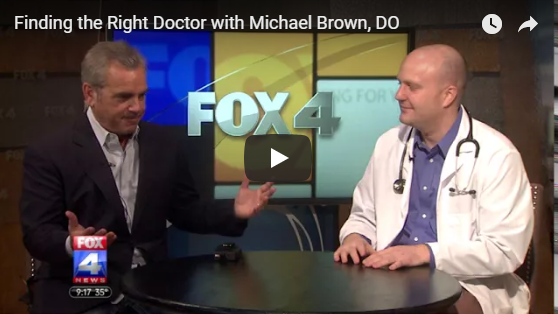Gynecologist Guides Women Through Menopause Treatment
October 29, 2018By: Amy Bennett
Categories: Gynecology, Live Healthy, Your Wellness


Gynecologist, James Riojas, MD, FACOG with Meritas Health Obstetrics & Gynecology
Most women in the U.S. begin menopause between the ages of 40-58, with an average of 51. Depleting estrogen levels leave women with a range of potentially life-disrupting symptoms and health risks, including genital and sexual symptoms, hot flashes, mood changes, night sweats and sleep disturbance.
Yet, women oftentimes do not seek treatment. According to an American Association of Retired Persons 2018 survey of more than 400 women between the ages of 50-59, 42% reported they’d never discussed menopause with a health provider. The survey of more than 400 women between the ages of 50-59 also showed that only one in five women received a referral to a menopause specialist.
A study published in the Feb. 18, 2016, issue of Post Reproductive Health looked at the attitudes and behaviors regarding treatment in women 45 years and older in France, Germany, Italy, Spain and the United Kingdom. Of the 3,890 peri- to postmenopausal women who completed the internet survey, 67% experienced symptoms, but 54% sought medical input or some treatment.
The hallmark for diagnosis of menopause is based on when a woman has no menstrual periods for 12 consecutive months and no other causes can be identified. “The decline in estrogen production can cause symptoms and physical changes that can affect their quality of life,” said James E. Riojas, MD, FACOG, a gynecologist with Meritas Health Obstetrics & Gynecology.
Hot Flashes
Hot flashes are common with 40% of women experiencing them during perimenopause, and 60%-80% having them during menopause. He grades symptoms based on mild, moderate and severe. “Hot flashes can last seconds to several minutes, occur daily or hourly, and present as night sweats, which affect a woman’s ability to fall or stay asleep. These disruptions can affect her daytime well-being and mood,” Dr. Riojas said.
Several factors contribute to the severity of hot flashes, including:
- Ethnicity
- Genetics
- Obesity
- Race
- Reduced physical activity
- Smoking
“Evidence suggests the hot flash phase may last four to 10 years, with 9% experiencing subtle forms into their 70s,” Dr. Riojas said.
He cautioned women who experience hot flashes outside the normal age range, whose symptoms do not improve with simple treatment or whose recur after going through menopause. “They should seek evaluation for potential other causes of hot flashes, such as cancer, diabetes, infection or thyroid disease,” he said.
Genitourinary Syndrome
That lack of estrogen can result in a condition now referred to as genitourinary syndrome, which includes vaginal dryness, vaginal itching, painful intercourse and decreased caliber of the vagina which can contribute to decreased libido. GUS also affects the bladder by increasing urinary frequency, incontinence and infections.
GUS occurs in 15% of perimenopausal and 55% of menopausal women, respectively.
“Unfortunately with GUS, only 25 percent of patients seek treatment from their healthcare provider,” Dr. Riojas said.
“We know that GUS involves decreased estrogen levels, and estrogen is responsible for elasticity and lubrication of vaginal tissue. For the most part, GUS is not likely to improve without treatment. It is not a temporary phase.”
Behavior modifications may improve symptoms of GUS. Those include avoiding sexual abstinence, decreasing alcohol intake, smoking cessation and using vaginal moisturizers.
Physical Changes
Other physical changes secondary to decreased estrogen levels include negative effects on cognitive function and mental health, as well as changes in hair, hearing, skin and vision.
“There can be a decrease in cognitive performance and verbal skills, but it is not known if these changes are directly related to actual estrogen levels or whether they are secondary to the disruption of life from night and day hot flashes,” Dr. Riojas said. “We also see an increase in the incidence of depression, especially during perimenopause. This is likely related to the large fluctuation of hormones during this timeframe. Women are at increased risk if they experienced anxiety or depression at younger ages. Again, it is not known if this is directly related to estrogen or the domino effect of the disruption of life due to hot flashes, night sweats and other midlife stressors.”
Eye changes include blurred vision, dry eyes, increased risk of cataracts and glaucoma, and hearing loss is accelerated with menopause. “Comparing men of the same age, women see an accelerated incidence of hearing loss. It’s been shown that estrogen may be protective, but once estrogen is removed then the normal progression will take place,” Dr. Riojas said.
Changes with both hair growth and hair loss also occur. “It’s common for people to notice an increase in their amount of facial hair, but it’s important to realize some of this is genetic, especially in those of European dissent,” Dr. Riojas said.
“During the first five years of menopause, people also can see as much as a 30% loss of skin collagen,” Dr. Riojas said.
“And that is associated with other risk factors, such as sun damage, which leads to the increased incidence of wrinkles during this time.”
Some women experience headaches during their menstrual cycles, and they will see a recurrence of this during perimenopause, but this improves as menopause progresses.
Treatment
Behavior modifications can help relieve the symptoms of menopause, and Dr. Riojas begins by asking patients to:
- Drink cool liquids
- Keep a fan at their work desk and bedside
- Limit alcohol and caffeine intake
- Lose weight
- Lower ambient temperatures
- Stop smoking
- Use a frozen gel pack with pillow at night
- Wear layered, breathable clothing
If these efforts aren’t successful, he discusses two hormone replacement therapy options:
- Estrogen alone
- Estrogen and progesterone
HRT can relieve hot flashes, mood and sleep disturbances, night sweats, as well as GUS associated with menopause. “We try to reserve HRT for women with moderate to severe symptoms,” Dr. Riojas said. “We know HRT is generally safe and the most efficient treatment for menopausal symptoms. As one can expect with any kind of treatment, there are always potential risks.”
“We reserve the HRT option for women with life-altering symptoms,” Dr. Riojas said.
When estrogens were first prescribed for menopausal symptoms, women with a uterus who were given estrogen alone showed an increased risk for uterine cancer. Adding progesterone negated the risk of uterine cancer. “A woman with a uterus who is prescribed estrogen should also be prescribed progesterone,” Dr. Riojas said. “A woman who has had a hysterectomy can take estrogen alone.”
Estrogen forms include creams, lotions, patches, pills and vaginal rings. “Overall, we try to do something dermally versus pill form because it potentially has less cardiovascular risk,” he said.
He noted that estrogen therapy is not indicated for women with a history of breast cancer, endometrial cancer, heart disease or unexplained abnormal vaginal bleeding, or with active liver disease.
Bioidentical HRT
No discussion of HRT would be complete without mentioning bioidentical HRT. Manufactured or compounded in a local pharmacy, bioidentical hormones contain combinations of medications that can include multiple types of estrogen, progesterone and testosterone.
“One of the potential issues with bioidentical hormones is that the quality is not regulated to the same extent as with pharmaceutical products, so there is a potential that the dose could vary batch to batch,” Dr. Riojas cautioned. “The problem with bioidentical hormones is there are some marketing insinuations that they are safer and more natural, but there is no scientific evidence that this is the case. They have the same risk profile as traditional pharmaceutical hormones.”
Nonhormonal FDA-approved Treatments
Other treatments options include the only nonhormonal treatment for hot flashes in the U.S., Brisdelle®. It contains paroxetine, which helps restore the balance of serotonin, a natural substance, in the brain.
“Brisdelle has been shown to moderately decrease the incidence of hot flashes, but it occasionally comes with side effects, including nausea, fatigue and dizziness,” Dr. Riojas said. “The important thing to remember about Brisdelle is it can inhibit tamoxifien’s action, so it should not be used in individuals with a history of breast cancer who are under treatment with tamoxifen.
Seek Treatment
If you experience any of the symptoms of menopause, call Meritas Health Obstetrics & Gynecology at 816.468.7800.



